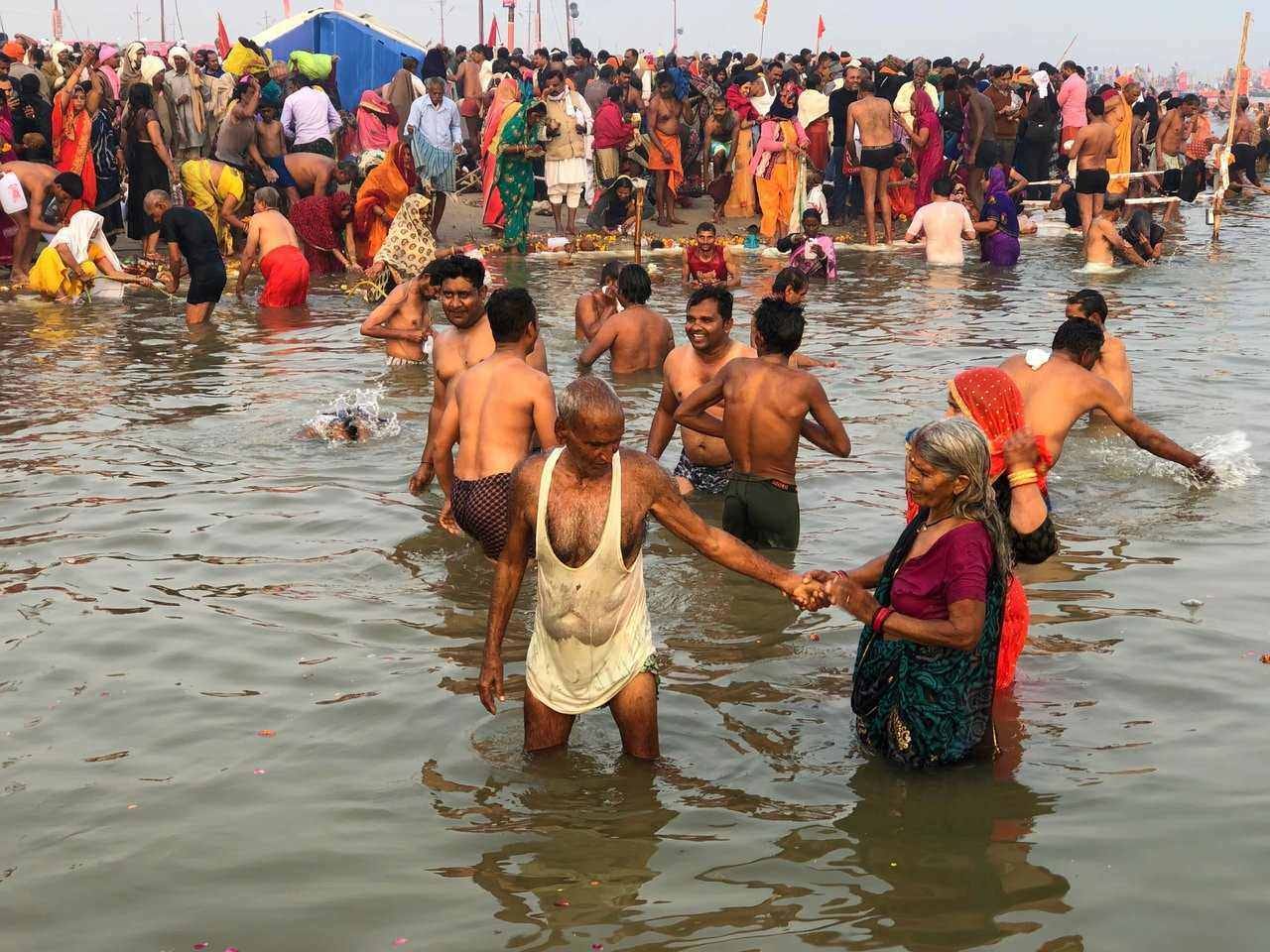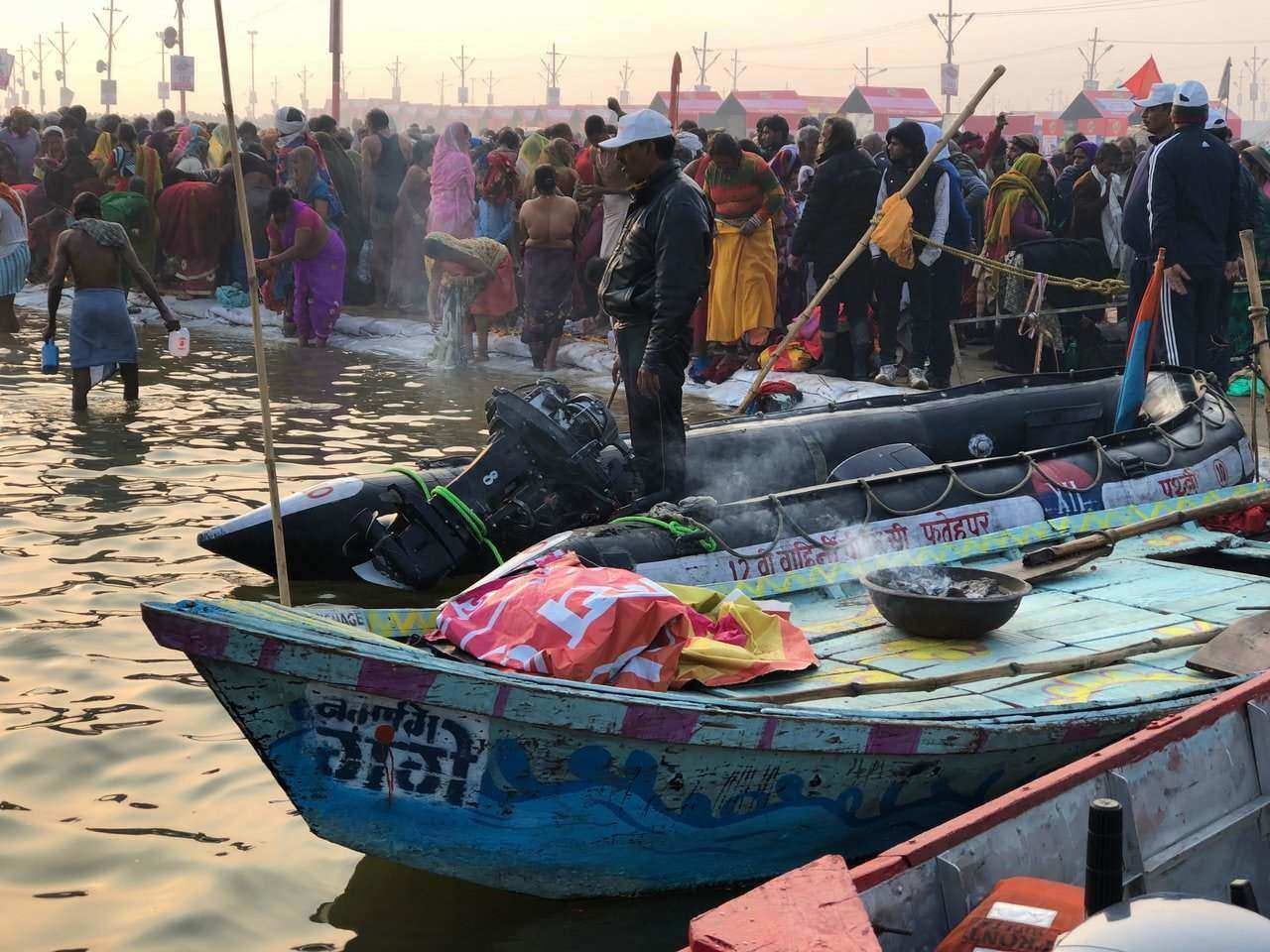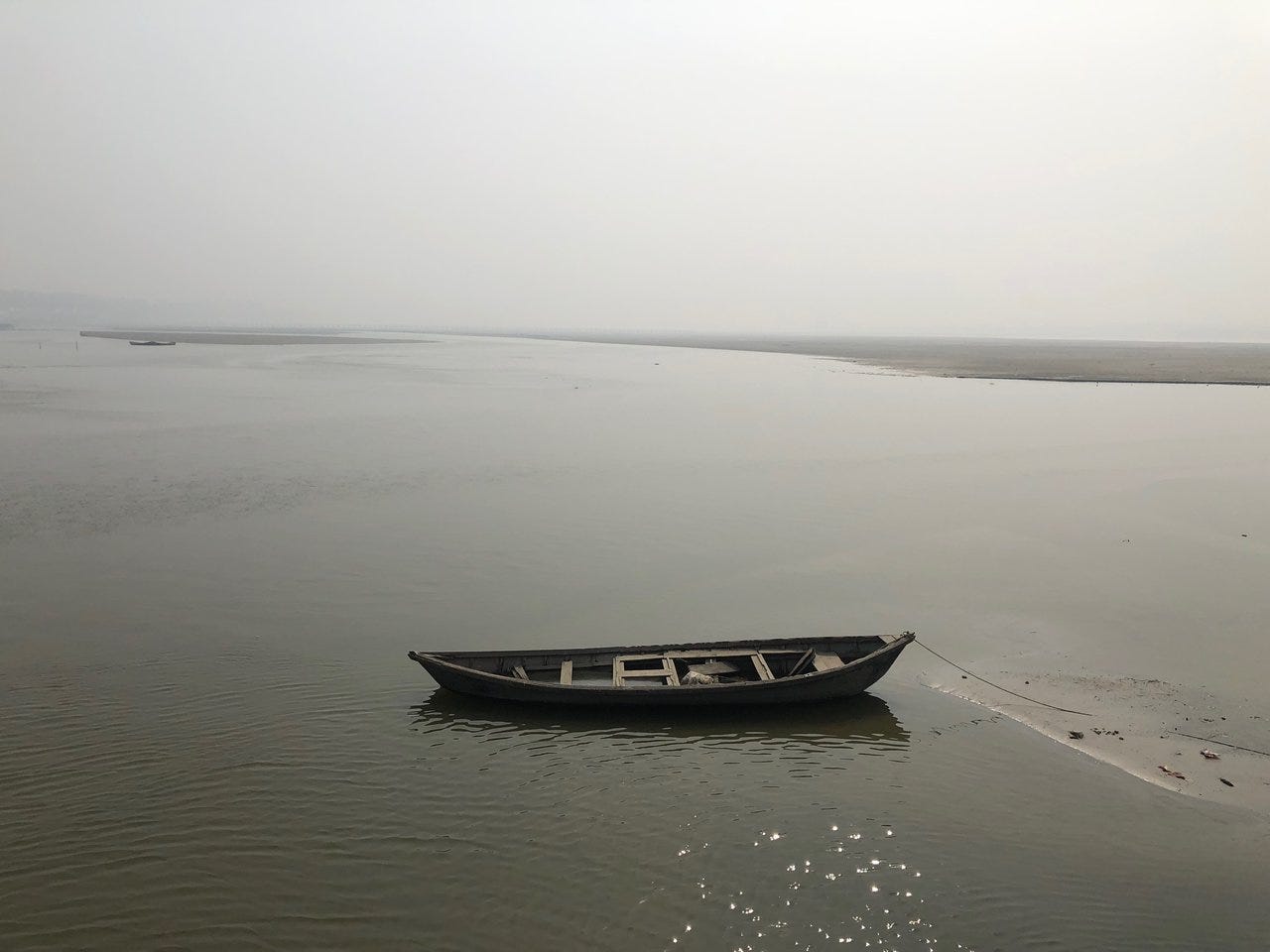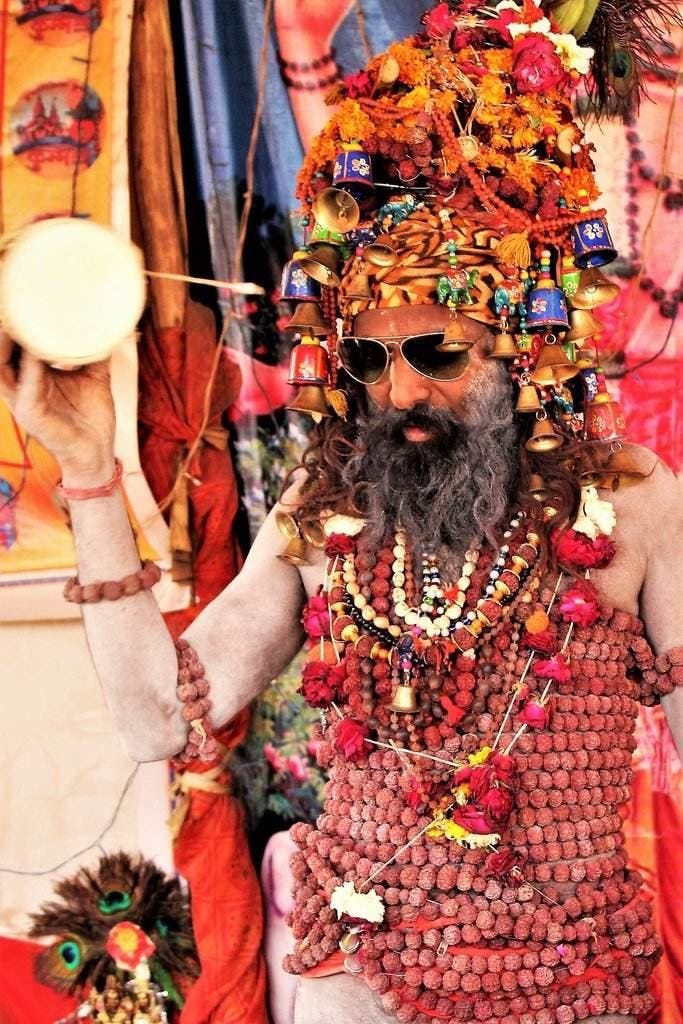Journeys and Jottings
Issue 71 - To new beginnings and journeys , Word of the Day, Ten Commandments for 2025 and the Kumbh Mela
“To love oneself is the beginning of a lifelong romance.” Oscar Wilde.
Another year, another journey around the sun and another set of goals.
Happy New Year everyone. It’s the time of the year when we all start afresh, looking inward and introspecting, coming up with new year resolutions, and focusing on ourselves. And I believe that while we all want to be better versions of ourselves, the first step starts with self-love and self-care. And as I celebrate yet another year of growing older, I just wish I am growing smarter and wiser, stronger and healthier. And as always, slowing down and taking time to appreciate the little moments in life.
Word of the Day - Shoshin ( Japanese ). A Zen Buddhist concept that translates to "a beginner's mind." It's a Japanese concept that says that no matter where we are, we are constantly learning and are open to new experiences. As we start this new year, I wish everyone plenty of exciting new experiences.
Ten Commandments for 2025
And they all start with a big NO .
No seeking validation from anyone
No need to prove anything to anyone
No negative self-chatter at all
No overthinking and rumination
No second guessing
No catastrophising
No procrastination
No taking more than what I can chew
No complaining
No building or burning bridges
Prayagraj Maha Kumbh Mela 2025 - The Grandest Spectacle of Faith and Devotion
In another few days, India will unveil the grandest spectacle of faith and devotion as millions of pilgrims and travellers will seek to cleanse and redeem themselves by a divine dip in the Holy Triveni Sangam - the confluence) of the rivers Ganga, Yamuna, and the mythical Saraswati. The Kumbh Mela is from Januaru 13 to February 26 at Prayagraj in Uttar Pradesh and the auspicious bathing dates referred to as Shahi Snaan are January 14, January 29, February 3, besides January 13, February 4, February 12 and February 26
The Maha Kumbh is a religious event that happens every 12 years while the Ardh Kumbh takes place every six years. The Guinness Book of World Records pronounced the Maha Kumbh Mela in 2013 as the “largest ever gathering of human beings for a single purpose” and I was just a tiny speck of the humanity who thronged these shores in 2019 during the Ardh Kumbh.
There are three other venues for the Kumbh Melas besides Prayagraj – Haridwar, Ujjain, and Nasik -Trimbakeshwar being the other three and it is celebrated four times over twelve years. While it is the Sangam of the three rivers in Prayagraj, the venues for the other spiritual festivals are the banks of the Ganga in Haridwar, the Godavari in Nasik, and the Shipra in Ujjain.
Beckoned by “Mother Ganga” or “Ganga Maa”, the banks of the river are filled with crores of pilgrims who have nothing else to offer but their faith and devotion. An old man clutching his aging wife, a young boy carried by his doting father on his head, a mother with her teenage daughters staying close together – families bonded by love and duty are here to pray to the rivers
At the Sangam, it’s their devotion and belief that bathes their minds as they dip into the river. The water is warm, like the affection of a mother welcoming them into an embrace. She welcomes the crores of people who believe that a mere dip in her lap will wash them off their sins and liberate them.
The divine story of Kumbh Mela
The Kumbh is referred to as the sacred pitcher which carried the nectar of immortality or Amrut. The ancient Puranas or the Vedic texts talk about the Samudra Manthan – the churning of the oceans when the Devas and the Asuras – deities and demons. fought over the Kumbh of Amruta or the immortal nectar. According to the legend, Bhagwan Vishnu disguised as a beautiful woman called Mohini tricked the demons and gave the nectar to the gods.
And as he flew heavenward with the Kumbh, a few drops of the nectar were spilled on the four sites. The entire legend takes over twelve days which in the human calendar translates into twelve years. And astrologically the dates of the mela are planned keeping in mind the planet positions and the auspicious time. Over the period, the rivers become symbolically filled with the nectar and a mere dip is enough to cleanse people of all sins
The origin of Kumbh is not known historically but it was Shri Adi Shankaracharya, the Hindu saint who established the Kumbh Mela and the Ardh Kumbh and brought all the different sections of the Hindu faith together to the Kumbh.
The ritualistic dip in the rivers is mentioned in the travels of Hieun Tsang or Xuanzang who witnessed several devotees celebrate the festival in a town. It is believed to have been identified as Prayagraj during the reign of King Harsha. However, historians are still divided as to whether the Chinese traveller was recording the Kumbh Mela or if it was a Buddhist ritual.
While millions of devotees head to the divine confluence, the showstoppers are the Naga Sadhus. There are Sadhus and Sadhus and then there are the Naga Sadhus. They are quirky, dramatic, volatile, intimidating, elusive ash smeared, and stark naked.
But who are the Naga Sadhus ? I have always been a bit curious about the Naga Sadhu history and where they came from. They were one of the earliest communities of sadhus or saints who are believed to be trained warriors although they have renounced the world. These celibate men who worshipped Bhagwan Shiva were athletic and strong and were adept in wrestling. They were considered an army of saints and the defendants of the Hindu faith against any provocation or invasion.
Most Naga Sadhus live in the caves or mountains or the forests and they live in their retreats with little contact with the outside world. Some of them are wandering saints and they go with their community from one place to another. However,r they merged with the civilization only during the Kumbh. It is a sight to see several of the Naga Sadhu in Kumbh Mela where they stay in Akharas – the Niranjani Akharas and the Juna Akharas which were created over 1000 years ago.
But the spiritual significance of the Kumbh is beyond these Naga Sadhus as the its an epitome of devotion and faith as the river gently purifies and awakens the soul.
Support my work, please
I do hope that you enjoyed reading this issue. Looking forward to your feedback as always. As mentioned earlier, if you would like to collaborate do drop in a message here.
And if you did like reading this issue, would appreciate it if you could upgrade to being a paid subscriber. It costs less than $1 a month and around $10 for the whole year. It would go a long way in supporting me and my work.
We are going to keep the flow of conversations going and I would appreciate it if you would share my newsletter with your friends and family.
See you soon! You can also read my travel stories on my blog and follow me on my social media.
Blog - www.lakshmisharath.com
Twitter - www.twitter.com/lakshmisharath
Facebook - www.facebook.com/travelwithlakshmi
Instagram - www.instagram.com/lakshmisharath








The magnitude and expanse of the Kumbh Mela is mindboggling. I marvel how our culture upholds the sanctity of customs and rituals and lands on the moon too. Awe inspiring, irrespective of whether one's a believer or not.
A wonderful beginning of the year with a resolution and devotion. The ten commandments are those I myself like to add to my list. And the details about the mela was fascinating. Good work. Looking forward to more such articles. Happy New Year!